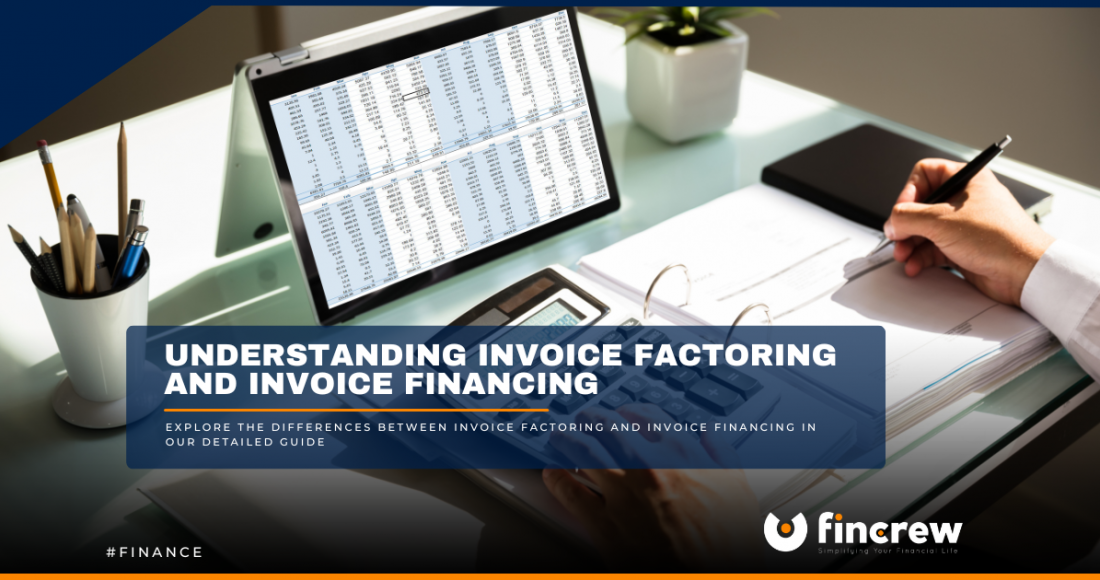It’s not uncommon for business owners who want to improve cash flow management to ask questions about invoice factoring, but they often overlook an explanation. Here’s a quick answer.
What is Invoice Factoring?
Invoice factoring involves invoice sales to a factoring company for fast access to funds. Business owners receive cash for invoice amounts ahead of payment terms, usually less any fees. Invoice amounts are instead paid to the factoring company by the business owner’s customer by original payment terms.
Accounts receivable factoring and receivable financing are also terms for invoice factoring. It’s essential to remember that this is not the same as invoice financing, where a factoring company gives a business owner cash for an invoice. Still, the business owner must pay back the invoice amount.
Factoring is more complex than this simple definition implies. It is essential to understand what factoring is, not to know why many businesses use it. A lot of misconceptions have tarnished the reputation of factoring.
Factoring isn’t a loan, so business owners don’t have to worry about paying back the money. Most importantly, factoring in invoices does not imply a business is struggling or cannot reliably serve its customers.
It couldn’t be further from the truth: invoice factoring is essential to a business’s cash flow when it needs to maintain liquidity despite long invoice payment terms. Often, it alleviates a business owner’s stress over cash flow.
Invoice Factoring: How Does It Work?
Invoice factoring is in demand because of long business-to-business (B2B) payment terms that cause cash flow issues. Payment terms are usually between 30 and 120 days in many industries. Rather than receiving payment immediately after delivering goods and services, business owners must wait for their customers to pay.
A small business owner with a large customer base is especially vulnerable to this problem. They are excited to close a large contract with a household-name customer, but when they read the payment terms, they realize they won’t receive payment for months. As a result, they are unable to maintain positive cash flow, which not only makes it challenging to run a business but also causes them anxiety. Small business owners must receive that money as soon as possible to cover expenses such as:
- Making payroll
- Buying new equipment
- Paying their suppliers
- Hiring staff
- Fulfilling large orders or projects
You might be surprised that these issues are pretty standard. Small businesses with improved cash flow can bid on projects requiring a lot of materials or labor. Companies unable to take on business due to cash flow issues can now accept it.
Invoice Factoring vs. Invoice Financing?
Many people mistakenly use the terms “invoice factoring” and “invoice financing’ as if they meant the same thing. Although both types of invoice funding share some similarities, they also differ. Those who are considering invoice funding solutions should spend some time clarifying the differences between them.
Invoice factoring differs from invoice financing (also called invoice discounting), primarily in how the payments are collected. Invoice factoring involves the lender collecting receivables from customers. On the other hand, invoice discounting leaves collection to the borrower. In addition to that, the terms and fees also differ.
With invoice factoring, 85% to 90% of the invoice value is upfront, whereas only 80% is typically offered upfront with invoice financing. Similarly, lenders charge different fees based on the level of risk they assume. The monthly payments for invoice factoring generally are higher at around 2% to 4.5%, while the monthly fees for invoice financing are usually lower at about 1% to 3%.
Invoice factoring or invoice discounting depends on several factors, such as:
- the reliability of your clients when it comes to paying their invoices
- the amount of time you have available to chase down your clients
- the percentage you are willing to give up in exchange for the loan, etc.
Consider those factors carefully before making a decision.





